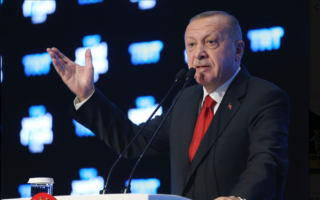Applying strategic autonomy: Ankara’s quest for BRICS membership

In early 2024, the alliance of states known under the acronym BRICS grew from five (Brazil, Russia, India, China and South Africa) to nine members. The integration of Iran, Egypt, Ethiopia and the United Arab Emirates constituted the second enlargement of the alliance which was founded in 2006 and incorporated South Africa in 2010. Since 2024 the acronym BRICS+ applies.
BRICS+ is a work in progress, including its size. Soon, the alliance could cast double-digit membership numbers. Two southeast Asian states – Malaysia and Thailand – recently applied. In August Azerbaijan tabled its application and in September Turkey officially listed its intention to join BRICS+. Other countries such as Serbia and Indonesia are considering the option of joining the intergovernmental alliance. Saudi Arabia has been invited to join the grouping, but is not (yet) a formal member. In short, the growing appeal of BRICS+ is real.
While other countries in Europe are seeking to implement de-risking strategies vis-a-vis Russia and China, Turkey is gradually choosing an opposite route
Provided the application proceeds favorably, Turkey would be the first BRICS member who is simultaneously a member of NATO and, at least formally, still an EU accession candidate. Such strategic ambiguity is motivated by Ankara’s objective to cast a plurality of institutional alignments in its foreign and security policy. This approach reflects President Recep Tayyip Erdogan’s determination to pursue alternative courses of action unilaterally, without feeling bound by Western or European institutional commitments.
The BRICS+ alliance offers ample opportunities for such a flexible approach. Critics and advocates view the enlarged alliance as a symbolic counterweight to the G20 and the European Union. Moreover, BRICS+ lacks tested formal structures beyond yearly summit meetings and closing communiques. Long-standing rivalries exist among some members, most prominently between China and India.
Despite growing in size, the intergovernmental organization has yet to develop a common set of rules and standards for coordinated action, e.g., in joint foreign economic policy-making and commercial trade relations. The formation of an institutional identity remains paramount for the BRICS+ grouping.
New financing options
Membership in BRICS+ opens the door for Turkey in other policy areas, in particular regarding financial resources. BRICS members have access to credit facilities provided by the New Development Bank (NDB). The multilateral institution was established in 2014. Its raison d’etre is to serve as an alternative financing organization vis-a-vis ‘Western’ lending arms such as the World Bank and the International Monetary Fund.
This financing element is part and parcel of BRICS members’ interest to increase trade and investment in currencies other than the US dollar. Shifting towards the Chinese renminbi is gradually taking place in energy transfer payments and the provision of credit lines to individual BRICS countries. Russia, which hosts the BRICS+ summit in late October in Kazan, is calling on participating countries to establish multilateral lending alternatives that challenge the US-led financial architecture.
A middle power?
Turkey’s intention to join BRICS+ reflects growing economic engagement between Ankara, Moscow and Beijing. In the former case, Russia’s energy exports to Turkey and the construction of the nuclear power plant in Akkuyu by Rosatom underscore increasing energy interdependence. In the latter case, the leading Chinese electrical vehicle manufacturer BYD announced a billion USD investment in Turkey in July 2024. BYD’s investment adds momentum to Turkey’s integration into China’s flagship Belt and Road Initiative (BRI).
This integration process has strategic value for all parties concerned. It reinforces the role of Turkey as a middle power between East and West. Put otherwise, as an “in-between state” Turkey can enhance its strategic flexibility with new institutional alignments such as BRICS and investment billions originating from Russia and Beijing.
While other countries in Europe are seeking to implement de-risking strategies vis-a-vis Russia and China, Turkey is gradually choosing an opposite route. Apart from applying for BRICS+ membership, Ankara has also sought a rapprochement with the Shanghai Cooperation Organization (SCO). This outreach by Ankara is consistent with Erdogan’s navigating of Turkey’s foreign policy interests through alignment with the Global South.
Outlook
Most EU and NATO members are likely to be irritated by Turkey’s BRICS outreach. But they may not explicitly oppose Ankara’s membership bid. Put another way, could it be tolerable to have a NATO member in the BRICS+ alliance? Testing such a configuration of flexible alignments is a hallmark of Erdogan’s approach to strategic autonomy. While it would be challenging to accept in Washington, Brussels or Athens, it could also signal recognition of how middle powers like Turkey have strategic leverage and exercise institutional flexibility in international relations. Make no mistake, Turkey’s relationships with the EU and NATO would further grow in complexity. But opposing Ankara’s prospective membership in an evolving BRICS alliance may ultimately involve more strategic risks than political benefits.
Jens Bastian is a Fellow at the Center for Applied Turkey Studies (CATS) of the German Institute for International and Security Affairs (SWP) in Berlin.





